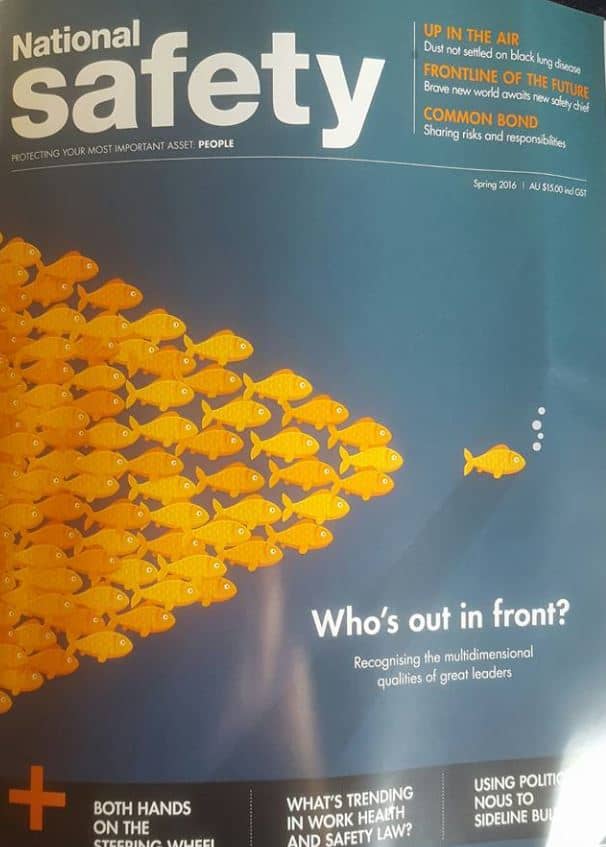The Spring 2016 edition of National Safety magazine includes a cover story on leadership written by me. In it John Lacey insists that safety leadership begins at the top. This position is supported by many business and occupational health and safety (OHS) advocates but this seems to me to be based on a misunderstanding of leadership.
 In response to a question about leadership in small- to medium-sized businesses, Lacey said that leadership “applies to all”:
In response to a question about leadership in small- to medium-sized businesses, Lacey said that leadership “applies to all”:
“[Leadership] is not different but how to apply it will be different. The start must be from the top down. The basic values, behaviours, knowledge and systems will be defined by the organisation no matter how large or small it is.”
This is remarkably like safety culture and my response is that leadership can be displayed by anyone at any level of a company or society and can manifest at any organisational level. The fact is that it is easier to sell a commodified leadership to executives as they are expected to show leadership in times of crisis or stockmarket uncertainty and most of us translate that into leadership of safety.
Leadership, as with most elements of OHS, takes time and effort – sometimes over generations. This is particularly so with anything concerning corporations that are wary of change unless that change supports profit and shareholder returns. (I would argue safety increases profits and company value but this is an argument than struggles for traction)
The most abused aphorism used to justify this focus on executive leadership is that “a fish rots from the head down”. Nonsense. As this website states, it is the guts of a fish that rots first.
 The attention given to senior executive leadership is an organisational echo of the economic trickle-down theory which has been roundly dismissed as flawed and, in some instances, has contributed to increasing socio-economic inequality.
The attention given to senior executive leadership is an organisational echo of the economic trickle-down theory which has been roundly dismissed as flawed and, in some instances, has contributed to increasing socio-economic inequality.
Lacey acknowledges that anybody within an organisation can lead although leadership starts from the top. He supports my contention that leadership occurs at all levels of a business and that actions show leadership and safety, probably, more effectively and cheaper than any training session. Lacey says
“…even the gesture of picking-up litter or wearing the correct [personal protective equipment] in front of others in the work team can be seen as a form of leadership. Leading by example is an old but such a true saying.”
These actions are the best way of improving workplace safety and showing leadership, and for the least cost. Safety should be improved by actions rather than PowerPoint.
[Note: please support National Safety magazine if you can. It is not available online and only through subscription but it is one of the few hard copy OHS magazines left in Australia and one of the few, if not the last, that actually pays its writers (not as much as we’d like but that’s the continuous battle of the freelance writer). This stance is keeping advertorials at bay and gives National Safety an integrity that is often missing in other safety publications]

Words cannot be empowered without action. True leadership should be based on action not with presentations or documents.